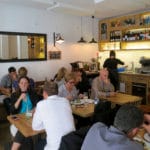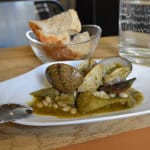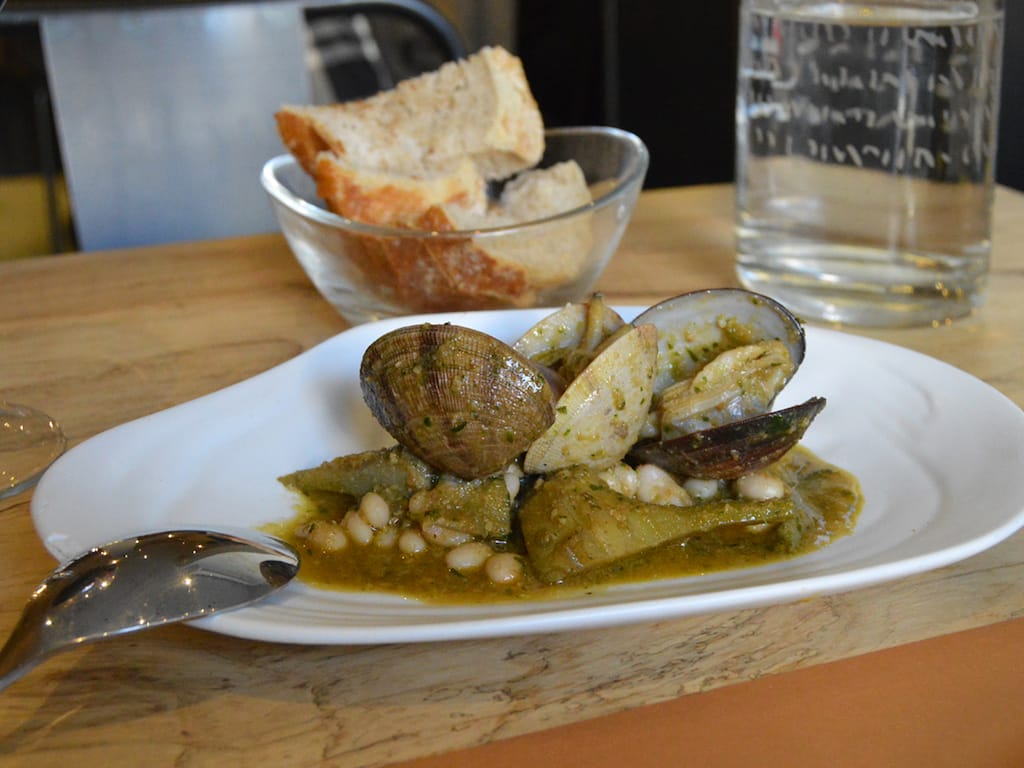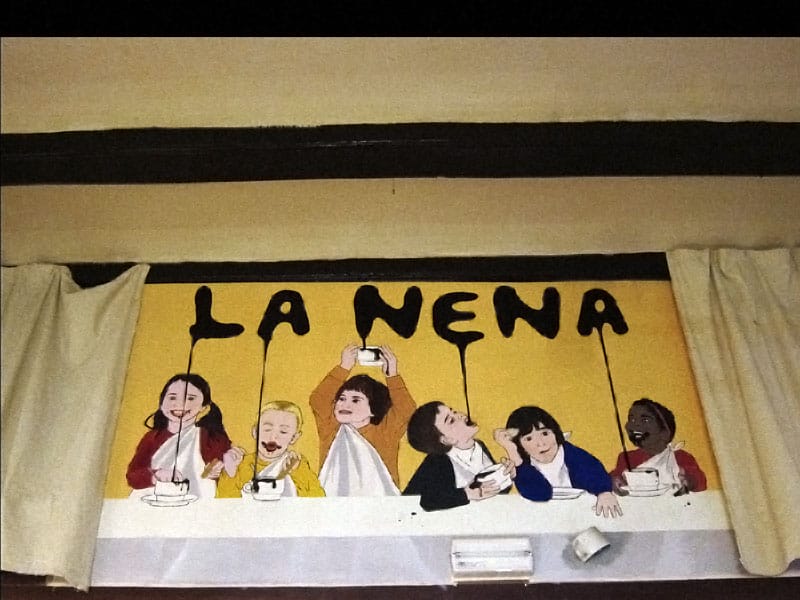El Resolís has already been through several reincarnations, each time as a meeting place for strong, yet completely different – sometimes opposing – social groups. But even across time, changing styles and menu updates and under different owners and chefs, the place has never altered its name or its basic culinary M.O.: traditional, populist, affordable.
Located in the heart of the gypsy Gràcia district, El Resolís was founded in the late 19th century. During the second half of the 20th century, it became the headquarters and the social meeting point for the Falange, the fascist and sole legal party of the Francoist dictatorship. This extremely conservative regime repressed the official use of Catalan and other cultural expressions in Catalonia and other Spanish regions.
In 1977, during the Spanish transition to democracy, a native of Castilla La Mancha named Joaquín took over the restaurant. He was a Barça supporter and a bullfighting fan, and his regular gypsy customers turned the old right-wing Resolís into one of the flamenco rumba meccas of Barcelona. His clientele also renamed him Payo Joaquín – payo means “non-gypsy” in Caló, the language spoken by Spanish and Portuguese gypsies. Payo Joaquin served the usual Catalan and Castilian tapas: tortilla de patatas, pa amb tomàquet (bread with tomato and olive oil and salt), botifarra (pork sausage), manchego, etc. After more than 30 years behind the bar, he started considering his retirement and thus the wheel of fate started spinning again.
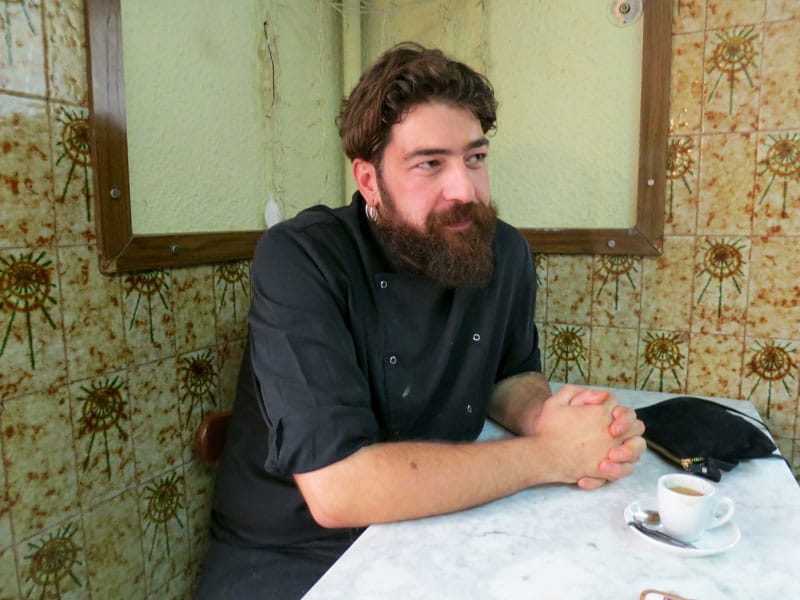
In 2013, L’Ateneu Independentista of La Vila de Gràcia (Vila de Gràcia’s pro-Catalan independence athenaeum), known as La Barraqueta, decided to move to a bigger venue with a bar and kitchen and with enough space to host its educational, social and political activities. The members decided to take over Resolís, which was just two doors away from their venue at the time. La Barraqueta’s aim was to keep the same spirit of the restaurant, and it also wanted Joaquín’s regulars to continue to feel welcome there. Only three things changed: the restaurant’s new name was La Barraqueta-Resolís, bullfighting was no longer shown on TV, and the menu changed from being mainly Catalan-Castilian to having a more Catalan-Valencian focus.
A gastronomic cooperative formed by a chef, a patissier, a maître d’ and other hospitality professionals started managing the new Resolís. Jordi Aldeguer, a young professional cook from Elche (Valencian Community), was especially involved in the project from the very beginning, and he became the head chef for functions. He’s also responsible for the restaurant’s wonderful rice dishes, including the famed lobster paella. Paella, of course, is a Valencian specialty, and for Aldeguer, the words “Valencian” and “paella” are in fact as redundant as “white snow.”
The lobster paella, available from Thursday to Sunday, is made of bomba rice, fish broth, onion, cuttlefish, lobster and a generous dose of passion and knowledge passed down through family. Intensely flavored and wonderfully rich, this dish can be eaten with a fork straight from the paella (the name of the pan used specifically for cooking paellas), as people do in the Valencian Community (and another legacy of Arab influence).
Besides the lobster and seasonal paellas, the kitchen prepares other Valencian specialties, such as arroz a banda (rice cooked in fish stock), moixama (dried tuna) and tabellacos. The last is a traditional Arab-influenced dish from Elche and Orihuela that was very popular during times of scarcity, as it is extremely filling. It’s made with sofrito (garlic, onion and tomato sauce), peas, beans or other vegetables and flour-based omelets. Every October 9, the restaurant celebrates La Mocadorà, the most traditional Valencian festival, with marzipan sweets (also Arab in origin) in fruit and vegetable shapes inside a hanky (mocador), which men give to women.

Between the 18th and 20th centuries, athenaeums such as the Athénée de Paris emerged throughout Europe as literary or scientific private associations of all ideologies that hosted courses and conferences for their members. The privileged classes founded most of them except in Catalonia, where working-class people from different political backgrounds also established a significant number of them to improve their education and to provide their own communities with cultural access. They also provided social meeting places and political debate forums. For instance, the ateneus llibertaris – libertarian athenaeums – motivated the expansion of libertarian and anarchist ideas among the Catalan working class, who saw how their living conditions had worsened during the industrialization of the country. In the early ’30s, there were 200 registered athenaeums in Catalonia. Today there are 400.
La Barraqueta is one of the few ateneu llibertari remaining in Barcelona, and its aim is “to work towards the construction of united, independent, socially fair, developed and feminist Catalan Countries” – the territories where the Catalan language is spoken (Catalonia, the Balearic Islands and the Valencian Community, as well as the French Pyrénées-Orientales region). La Barraqueta is currently linked to several left-wing community associations as well as to La Candidatura d’Unitat Popular, a pro-Catalan independence party made up of autonomous eco-socialist and libertarian local assemblies whose presence in Catalonian politics has increased steadily since 2012.
Who knows where the future leads for El Resolís? For now, we feel lucky to have a welcoming eatery with lots of personality in the kitchen and a convivial space that brings people together to share ideas big and small over delicious food.
Published on November 10, 2015
Related stories
June 15, 2016
BarcelonaHalfway between a French bistro, a Nordic café and a Spanish casa de comidas (a traditional small family-run eatery where the menu changes according to season and the market), Santa Gula is the perfect place to sin – gastronomically speaking – in Gràcia. Hidden in a small and peaceful square, Santa Gula, or Saint Gluttony,…
February 26, 2015
BarcelonaHere we are in the Bishop’s Belly, La Panxa del Bisbe, which is not the midsection of a Catalan priest, but both a restaurant and a mountain. The latter is one of the peaks of the sacred Catalan mountain of Montserrat, so-called because its shape evokes a small head over a rotund, pronounced belly. It’s…
April 16, 2013
Barcelona | By Johanna Bailey
BarcelonaDear Culinary Backstreets, We will be visiting Barcelona with our children. Do you have any good recommendations of places in the city to eat with kids? First of all, you should know that in Spain, you are welcome with children in just about any dining establishment. Because Spaniards don’t tend to entertain much in their…










































